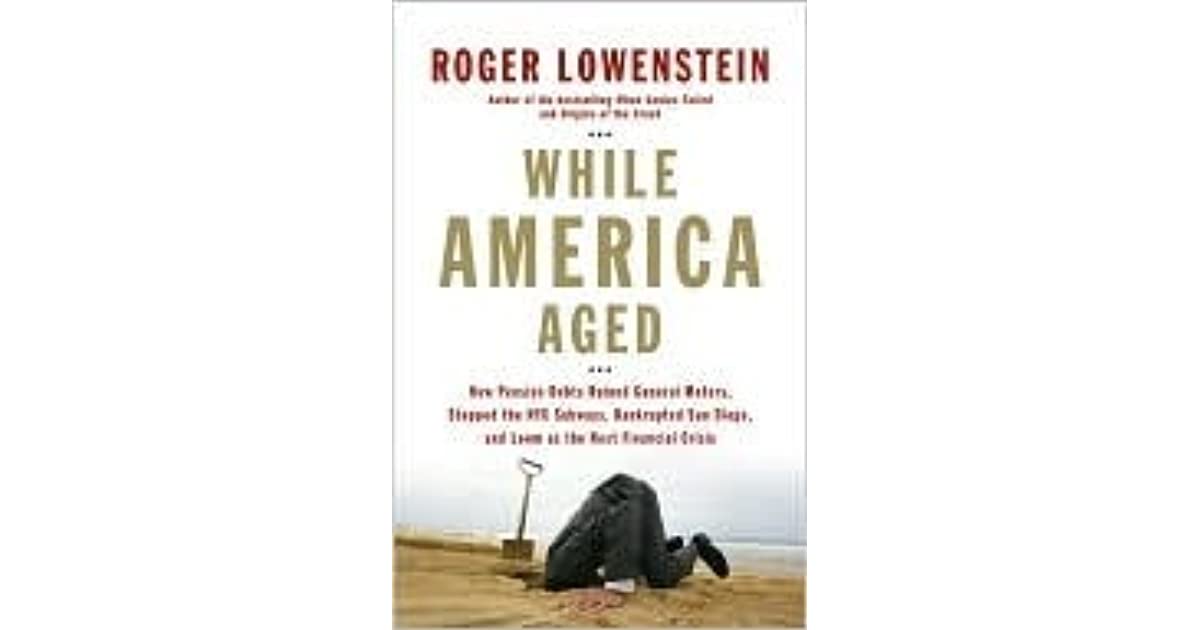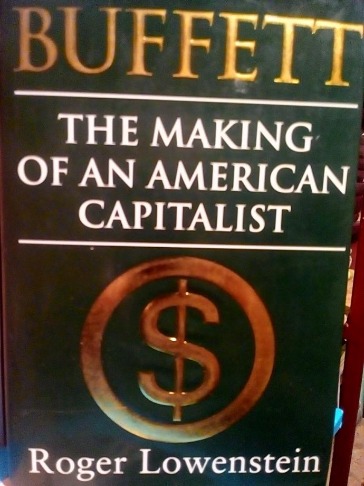Roger Lowenstein Books
Table of Contents Heading
- Big Idea #3: Ltcm Brought Academic Knowledge To Investment Banking
- Financial Journalist And Bestselling Author Of The End Of Wall Street
- Video Summaries Of When Genius Failed
- Remove From Wishlist Failed
- Lists With This Book
- Written By Roger Lowenstein
The author of 6 books started out as a local reporter, eventually moving on to spending 15 years at the WSJ, including several years writing the storied Heard on the Street column. and shop for books yourself, following the health and safety guidelines set out by Marin and San Francisco counties. The tumultuous era and remarkable personalities that unexpectedly birthed the Federal Reserve, from renowned financial writer Roger Lowenstein Until the election of Woodrow Wilson the United States – alone among developed nations – lacked a central bank. One of the country’s most prominent financial journalists, Roger Lowenstein—who began his career as a Wall Street Journal reporter—currently writes as a columnist for Bloomberg News. An expert on Wall Street, he covers everything from Warren Buffet to pension plans to the crash of 2008, the subject of his bestselling book The End of Wall Street. Warren Buffett’s pecularities (drinks coke, lives in Omaha, invests “permanantly”) makes him a curious phenom but not an exciting subject matter. And by the time you get to 40th sentence in the likes of “in 10 year period, XYZ stock grow by astonishing 2000%) you are definitely not astonished. And no, there are no stock tips in here that you don’t know already.

Many people believe that the theories of academics are different from what goes on in the real world. There’s a big gap between professors and their theories, and the real world. LTCM (Long-Term Capital Management) believed that for them, things would be different because they were experts who could apply academic knowledge to the market. Although hedge funds have a lot of money, they need more to maximize their potential returns.
Big Idea #3: Ltcm Brought Academic Knowledge To Investment Banking
From the first chapter, this book was captivating as it details key events throughout Buffett’s entire life. From his first “businesses” delivering newspapers and arcade games, starting a family and trying to instill his values in his children and in more modern day times, having to take a more direct role in companies he invested in. Buffett’s determination from a very young age to some day be very rich as well as his innate ability to comprehend and retain numbers meant that he was able to do just that.
That’s truly a balancing act because this is being published for a mass nonfiction audience, an educated audience but not an academic audience. Yet I wanted to be favorably received by the scholar as a serious book so that’s just a lot of decisions about what to keep in. If I’m introducing a character, I want to have a fully formed idea of what the character is going to be.
Each bank was left to stand on its own, with no central reserve or lender of last resort. The real-world consequences of this chaotic and provincial system were frequent financial panics, bank runs, money shortages, and depressions. By the first decade of the twentieth century, it had become plain that the outmoded banking system was ill equipped to finance America’s burgeoning industry. It took an economic meltdown, a high-level tour of Europe, and—improbably—a conspiratorial effort by vilified captains of Wall Street to overcome popular resistance. Finally, in 1913, Congress conceived a federalist and quintessentially American solution to the conflict that had divided bankers, farmers, populists, and ordinary Americans, and enacted the landmark Federal Reserve Act. The decades leading up to the Fed’s creation were punctuated by repeated financial crises, culminating in the ferocious panic of 1907.
Financial Journalist And Bestselling Author Of The End Of Wall Street
These were Paul Warburg, a refined German-born financier, recently relocated to New York, who was horrified at the primitive condition of America’s finances; Rhode Island’s Nelson W. Aldrich, the reigning power broker in the U.S. The real-world consequences of this chaotic and provincial system were frequent financial panics, bank runs, money shortages and depressions. In 2016, he joined the Board of Trustees of Lesley University. The company’s executives calculated that they could lose $35 a day.
Written without active support by Buffett (he also didn’t discourage anyone from working with Lowenstein). I felt Lowenstein’s writing in When Genius Failed, the account of the failure of Long Term Capital Management, was stronger.
Video Summaries Of When Genius Failed
It’s funny also to learn that Samuelson the nobel laureate on market efficiency theory, eventually bought a big stake in Berkshire just in case he was wrong lol. Greenwald said he is not really a Graham and Dodder, but that he is more into speculating not investing. Have the purchase price so attractive that even a mediocre sale would do. Stay rational, a horse than can count to 10 is a great horse but not a mathematician. Buffett thought that executes were overpaying themselves in bad times.

At that time, this was fine because LTCM were experts who could make good investments for the banks’ money. But then LTCM made some bad investments and lost a lot of money, which caused problems for the banks that had given them all that borrowed money to invest with. In this famous story, Icarus flies too close to the sun and his wings melt.
Remove From Wishlist Failed
In 1991, a scandal forced Meriwether out of Salomon Brothers. He decided to start his own hedge fund that would be unregulated and available only to the rich. Most hedge funds are conservative; they use leverage in order to create market neutral portfolios.
In October 1997, the Nobel Prize in Economics was awarded to Robert Merton and Myron Scholes. However, their company Long-Term Capital Management was already on its way out. They had angered some of their investors by forcing them to take money out of the fund. Soon those investors would be grateful that they escaped LTCM’s collapse.
Also, those who invested in LTCM lost most of their money when it failed. The partners never took full responsibility for its failure because they raised $250 million just 15 months after LCTM collapsed and started another hedge fund called JWM Partners. So the Federal Reserve Board of Governors met with 45 of Wall Street’s top bankers to discuss how they could raise $4 billion in one day to save Long-Term Capital Management . The board members were mad and didn’t want to give LTCM any money, but after tense negotiations, almost every bank agreed. They transferred $3.65 billion just before the deadline.
Or consider giving books as your corporate holiday gift this year. A tour de force of historical reportage,America’s Bankilluminates the tumultuous era and remarkable personalities that spurred the unlikely birth of America’s modern central bank, the Federal Reserve. Today, the Fed is the bedrock of the financial landscape, yet the fight to create it was so protracted and divisive that it seems a small miracle that it was ever established.
The kind of obsession Buffet has over his money is repulsive, even wrapped into soft whispering propaganda that tries to inverse the meaning of words. I often provide links to books on Amazon.com where you can purchase books and help support the continued operation of this blog. However, I strongly encourage you to check out your local library. All-in-all, I think this is a good book, well worth reading and a great addition to my library. Buffett the man has a great sense of business and a great success record. Companies call on him to bail them out when they are in a jam. Buffett studies business models constantly and has an amazing head for business figures.
Lists With This Book
I prefer to concentrate on what I am reading, and remember what I read. This site uses cookies to deliver our services, to understand how you use our site and to improve your experience.
While doing so, he evolved from a Ben Graham disciple focused on statistical cheapness towards a focus on high quality businesses like Coca-Cola. There are many lessons in the book that I only appreciate now having worked in the industry, and I’m sure there are many more to be revisited in the future when I come to understand many of the things that Buffett has already known. This book isn’t revelatory, because the Warren Buffet story has been told many times. The Midwesterner coming from a family of grocers, with a strict Republican Congressman father, parleys some pinball machine earnings and the advice of Columbia University Professor Benjamin Graham into one of history’s greatest fortunes. But this is a model biography, one with lucid prose and easy grace, that weaves the story of Buffett into the story of American investing, politics, and business in the 20th century. Unlike the modern portfolio manager, whose mind-set is that of a trader, Buffett risked his capital on the long-term growth of a few select businesses. He once wrote that he would no more take an investment banker’s opinion on whether to do a deal than he would ask a barber whether he needed a haircut.
Hedge funds make bets on tiny differences between the present and future price of financial products. This requires large investments, so hedge funds can’t generate a lot of profits with only small discrepancies in prices. To show this, imagine that the same company sells two stocks in different markets.
This is how Buffett’s life has progressed in these 3 phases and this book has described all 3 phases in a detailed manner. In the 2007 afterword, Lowenstein asks himself if there is anything he would change about the biography. The one thing, in retrospect, that he thinks he didn’t fully capture about Buffett was his toughness. This avuncular , absent-minded, affable Midwesterner was also hard as steel. Unlike other investors or executives, he said “No” frequently, and didn’t suffer fools. But the other thing I think this biography misses is Buffett’s competitive streak.
- Contains several pearls of gem about his personality, temperament and his genius that led to a follower-ship bordering on idolatry.
- It took an economic meltdown, a high-level tour of Europe and—improbably—a conspiratorial effort by vilified captains of Wall Street, to overcome popular resistance.
- It’s by Roger Lowenstein, a former Wall Street Journal reporter who’s become well-known for a best-selling biography of Warren Buffett as well as a variety of books about Wall Street’s greatest crises.
- Each of its cases offers a compelling story that illuminates how the pension crisis developed.
- Many people were excited about them and saw them as a great way to make money.
I’ll send you notes on entrepreneurship and summaries of the best books I’m reading. Subscribe to get summaries of the best books I’m reading. Many banks and investors began looking into ways of taking control of LTCM.
Lowenstein attributes Buffett’s accumulating tendencies to his lifelong fear of death. I would also say that the book misses some of Buffett’s competitiveness, which is expressed in his desire for a level playing field and his strong belief, vindicated of course, that he could win on one. Contact your local library and find out what excellent deals they offer. If you will look at all my reviews, you will see that there have been occasions when I have written a negative review after having been given a book. Buffett is also said to be a large supporter of Planned Parenthood. The book states that Buffett sees donating to Planned Parenthood as an investment in the well-being of the world. The book states that Buffett sees this as a way to prevent over population of the world.

